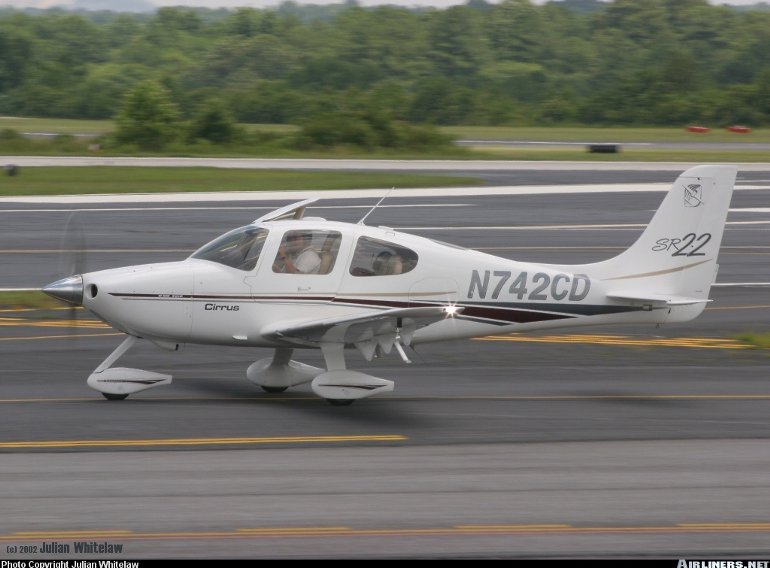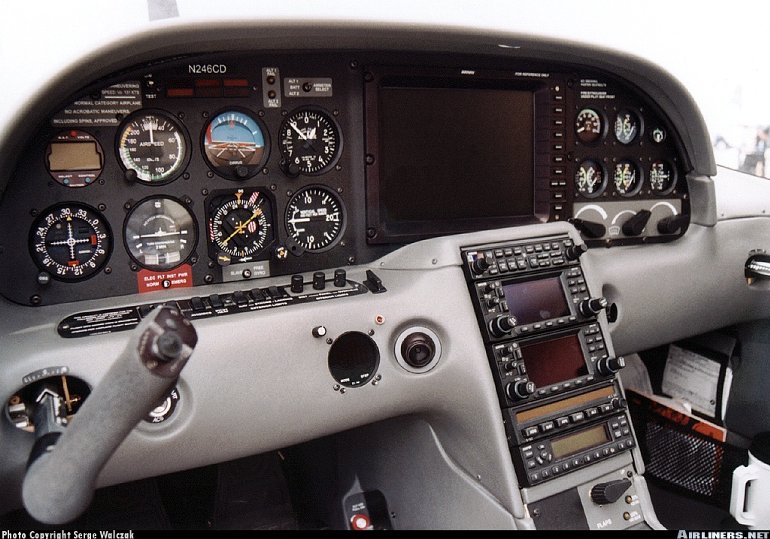Aircraft Technical Data
Cirrus SR-20/22


| Details | |
| Country of Origin | United States of America |
| Type | Four seat high performance light aircraft |
| History | Cirrus Design Corporation's SR-20 is an all new, modern high performance four seat light aircraft. Cirrus began life as a designer and manufacturer of kit aircraft. The company's piston or turbine powered kit built VK-30 four seater in fact forms the basis of the SR-20 design, although the two aircraft are very different, particularly as the VK-30 features a pusher engine. The VK-30 first flew in February 1988 but kit production ceased in 1993 to allow Cirrus to relocate its manufacturing facilities to Duluth, Minnesota, and to concentrate on designing and manufacturing a family of fully certificated and factory built GA aircraft. Details of the SR-20 were publicly revealed at the Oshkosh EAA Convention in July 1994. What was revealed is one of the most advanced four seaters in production or under serious development. The SR-20 features composite construction, advanced avionics including a large colour multifunction display, side mounted control yokes and a 150kW (200hp) Teledyne Continental IO-360 flat six piston engine with a single lever operating both mixture and throttle. The SR-20 will also be fitted standard with a Ballistic Recovery System (BRS) parachute (a first for a certificated production aircraft), while various energy absorbing features have been designed into the airframe to reduce deceleration loads and increase its ability to absorb energy in the event of an impact. Apart from its high levels of technology, Cirrus claims that the SR-20 offers significant improvements over current four seaters in the areas of performance, interior cabin space and internal noise levels. The cockpit interior is based on modern automotive designs. The SR-20 prototype made its first flight on March 31 1995. Full FAA FAR Part 23 certification was awarded on October 23 1998, with first deliveries planned for that December (certification was delayed somewhat because Cirrus sought to lower the stall speed and improve lateral control). Cirrus aims to build up to 400 SR-20s a year once full production is achieved. A number of developments of the SR-20 have been considered including a more basic version optimised for flying training powered by a 120kW (160hp) engine. In the fall of 2000, Cirrus Design received FAA certification for the 310 hp SR-22. With a longer wingspan, increased payload and higher cruise speeds, it promises to fill a market niche for those desiring these attributes. |
| Powerplants | SR-20 - One 150kW (200hp) Teledyne Continental IO-360-ES fuel injected flat six piston engine driving a two or three blade Hartzell propeller. SR-22 - One 231kW (310hp) Teledyne Continental IO-550-N flat six piston engine driving a three blade Hartzell propeller. |
| Performance | SR-20 - Max cruising speed at 75% power 295km/h (160kt). Initial rate of climb 1000ft/min. Service ceiling 16,000ft. Range with reserves 1480km (800nm). |
| Weights | SR-20 - Standard empty 932kg (2050lbs), max takeoff 1315kg (2900lb). |
| Dimensions | SR-20 - Wing span 10.85m (35ft 7in), length 8.00m (26ft 3in), height 2.82m (9ft 3in). Wing area 12.6m2 (135.0sq ft). |
| Capacity | Typical seating for four. |
| Production | Over 600 orders placed by April 2001, with first deliveries due December 1998. Up to 100 to be delivered in 2000. |
| Related Links | Cirrus SR-20/22 |
The backbone of this section is from the The International Directory of Civil Aircraft by Gerard Frawley and used with permission. To get your own copy of the book click here. |
|








